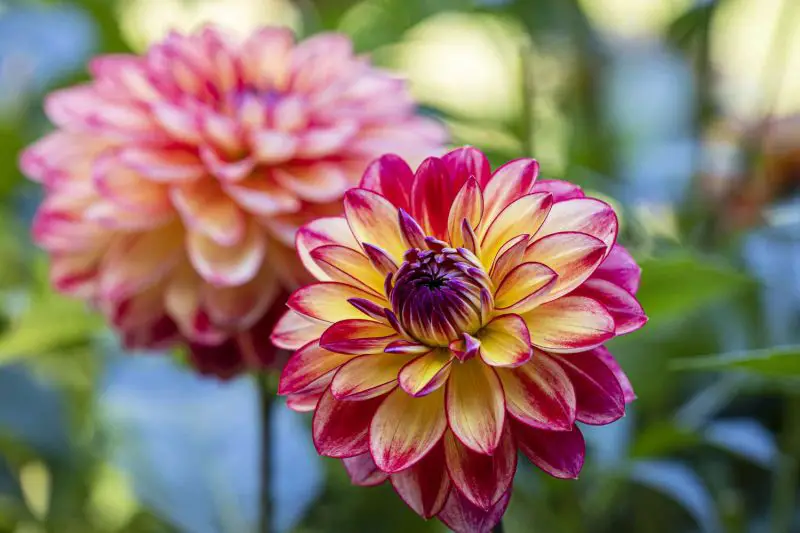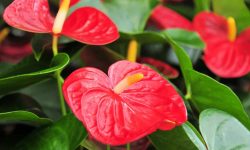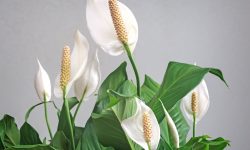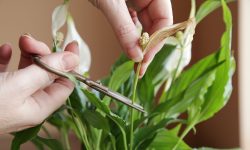Deadheading is a powerful gardening technique that can completely transform your dahlia plants. By removing spent blooms at the right time, gardeners can encourage more prolific flowering, increase bloom size, and maintain the overall health of the plant. Dahlias, known for their vibrant colors and wide variety of flower forms, thrive when given the proper care. Among the many tasks required to keep them flourishing, deadheading is one of the most essential.
This comprehensive guide dives into the art and science of deadheading dahlias. You’ll discover why this process matters, how it impacts bloom quality, and the step-by-step techniques you can apply to get lush, vibrant flowers all season long. From timing and tools to tips for avoiding common mistakes, this article gives you everything you need to elevate your garden’s beauty.
Understanding the Importance of Deadheading Dahlias

Deadheading is the removal of spent or fading flowers before they can go to seed. In the case of dahlias, which bloom continuously from mid-summer to the first frost, this practice stimulates the plant to focus its energy on producing new buds instead of developing seeds. Without deadheading, dahlias may begin to slow down their flowering cycle, resulting in fewer blooms and smaller, less impressive flowers.
Plants naturally follow a life cycle that ends in seed production. Once a flower starts to die, the plant sees its reproductive job as complete. For dahlias, this means that unless the withered blooms are removed, the plant may stop creating new flowers altogether. Regular deadheading signals to the plant that it must keep growing and blooming.
Deadheading also plays a critical role in improving the appearance of your garden. Removing wilted flowers prevents your dahlia beds from looking messy and unkempt. It helps maintain a fresh, tidy display of healthy blooms. In addition to aesthetics, deadheading can reduce the risk of pests and diseases that often find shelter in decaying petals and stems.
The Right Time to Start Deadheading Dahlias
Timing is essential when it comes to deadheading. Starting too early may mean removing flowers that still have life left, while starting too late may allow the plant to direct energy into seed production. For dahlias, the ideal time to begin deadheading is when the blooms begin to show visible signs of aging, such as browning edges, wilting petals, or a noticeable loss of vibrancy.
Typically, dahlia flowers remain in their prime for around three to five days after fully opening. Once the flower starts to fade, the process of decline accelerates quickly. Observing your plants daily can help you detect the perfect moment to deadhead. If the petals have begun to curl inward, lose their shape, or look soggy after rain, it is a clear indication that the bloom is past its peak.
The best time of day for deadheading is early morning or late afternoon when the sun is less intense. This helps reduce plant stress and prevents moisture loss. During hot midday hours, plants can become more vulnerable, and pruning at that time may cause minor shock. If your climate is especially hot or dry, scheduling deadheading sessions during cooler periods of the day is ideal.
Tools Needed to Deadhead Dahlias Effectively
While the task of deadheading may seem simple, using the correct tools ensures clean cuts and healthy results. The most common tools used for deadheading dahlias include garden scissors, pruning shears, or snips. These tools should always be kept sharp to avoid damaging the stems or crushing the tissue.
Using dull blades can tear or bruise the plant, which may lead to slower healing or increased vulnerability to infection. A clean, sharp cut encourages faster recovery and minimizes exposure to disease. It is also essential to sanitize your tools before and after each use, especially when moving between different plants. A quick wipe with rubbing alcohol or a bleach solution can help reduce the risk of spreading fungal spores or harmful bacteria.
In some cases, gardeners may prefer to use their fingers to pinch off soft stems. While this can be effective for small or delicate varieties, using this method on thicker or woody stems can cause uneven breaks. For dahlias with dense stems, pruners remain the most reliable option for consistent, clean results.
How to Identify Spent Blooms on Dahlia Plants
Accurately identifying spent blooms is an important step in successful deadheading. Freshly bloomed dahlias have vibrant, upright petals that hold their shape firmly. In contrast, fading flowers typically look droopy or misshapen, and their color often begins to fade or turn brown.
Another distinguishing feature is the central disk of the flower. On many dahlia varieties, as the bloom matures and begins to decline, the center becomes more prominent or sunken. Some flowers may even start to close up or display curled and shriveled petals. When the bloom is no longer visually appealing or structurally intact, it is a strong candidate for removal.
Looking closely at the stem can also provide clues. As the flower begins to die, the stem below it may become limp or develop a slightly yellowish tint. Removing the entire flowering stem, down to the next set of leaves or bud node, is usually recommended for encouraging new growth.
The Correct Technique to Deadhead Dahlias
The actual process of deadheading involves more than simply removing the petals. The most effective method is to trace the flower stem back to a point where a new bud, branch, or set of leaves emerges. Making your cut just above this node allows the plant to redirect its energy into producing new blooms from that location.
When deadheading, always angle your cut slightly. This encourages water to run off the wound, helping to prevent rot and fungal buildup. Avoid cutting too close to the node, as this can damage the new growth, and never leave long stubs that can dry out and attract pests.
Consistency is key. Checking your plants every few days during peak blooming season can help you stay on top of fading flowers. The more frequently you deadhead, the more your dahlias will respond by sending out vigorous new shoots and buds.
How Deadheading Improves Dahlia Flower Quality
One of the most noticeable effects of deadheading is the increase in bloom size and vibrancy. By removing spent flowers before seed formation begins, the plant can devote its energy and nutrients to developing larger, more colorful blooms. This energy conservation process directly benefits the newer flowers, allowing them to open more fully and maintain their brightness longer.
Deadheading also helps reduce competition among buds. When a plant does not have to support dying flowers, it can allocate resources more efficiently. As a result, subsequent blooms often appear in greater numbers, with more intensity in color and strength in structure. Healthy dahlias are capable of producing dozens of flowers over the course of a single season when regularly deadheaded.
Another key benefit is extending the blooming period. Rather than peaking early and declining by mid-season, deadheaded dahlias can continue to produce flowers well into autumn. This prolonged performance adds lasting beauty to your garden and gives you more opportunities to enjoy cut flowers indoors.
Encouraging Continuous Blooming Through Regular Care
Deadheading is one part of an overall care routine that supports abundant flowering. To maintain a consistent blooming cycle, dahlias also require full sun, regular watering, and balanced feeding. However, even when all other conditions are met, skipping deadheading can halt the blooming process prematurely.
After removing spent blooms, you may begin to notice new buds forming within a week. These will eventually take the place of the old flowers, ensuring an ongoing rotation of color. Deadheading accelerates this cycle and keeps your plant in an active state of growth.
Regular observation and hands-on care reinforce the connection between gardener and plant. As you deadhead, you gain insight into how your dahlias are performing and can catch signs of stress or disease early. This proactive approach leads to healthier plants and more vibrant results.
Common Mistakes to Avoid When Deadheading Dahlias
While deadheading may seem straightforward, a few common errors can reduce its effectiveness. One of the most frequent mistakes is removing only the petals or flower head, leaving the stem intact. This does not trigger the plant to produce new growth and may lead to an awkward-looking stalk without a bloom.
Another error involves cutting too far down the stem, removing potential growth nodes. This can delay blooming or reduce the number of flowers that follow. Being too aggressive with pruning can also shock the plant, particularly during extreme heat or drought conditions.
Neglecting to sanitize tools can lead to the spread of fungal infections, such as powdery mildew or botrytis. It is crucial to disinfect cutting tools before and after use. Finally, failing to stay consistent with deadheading can reduce overall flower output, as the plant begins to focus energy elsewhere.
Deadheading Dahlias in Different Growing Conditions
Gardeners across various climates may need to adjust their deadheading approach slightly based on environmental conditions. In cooler regions, dahlias often bloom more slowly, so deadheading may be needed less frequently. In warmer climates with longer growing seasons, more regular attention may be required to keep up with the continuous bloom cycle.
Humidity can also influence how quickly flowers fade. In moist environments, blooms may decline faster due to rain damage or fungal pressure. Removing soggy or rain-damaged flowers promptly helps prevent decay and disease. In drier areas, flowers may last longer, but stems may become brittle, requiring more careful handling during pruning.
Container-grown dahlias, which often dry out more quickly and have limited nutrient access, may benefit even more from frequent deadheading. These plants have fewer resources to spare, so keeping their energy directed toward new blooms becomes even more important for continued performance.
The Long-Term Benefits of Regular Deadheading
Over time, the cumulative effects of regular deadheading become more evident. Plants become bushier and more balanced in shape due to stimulated side growth. The number of blooms increases seasonally, creating a fuller, more dramatic garden display.
By encouraging repeated blooming, deadheading extends the ornamental value of your dahlias well beyond their initial flowering stage. It allows gardeners to shape and manage their dahlia beds with precision, creating visual harmony and maintaining a dynamic landscape throughout the season.
The practice also deepens your understanding of your plants. Watching how dahlias respond to pruning, light, temperature, and moisture allows you to tailor your care more closely to their needs. With each passing year, this attention results in healthier, more robust plants with increasingly impressive blooms.
FAQs About How to Deadhead Dahlias
What does it mean to deadhead dahlias?
Deadheading dahlias refers to the process of removing spent or fading flowers from the plant. This encourages the plant to produce new blooms instead of using energy to create seeds. It also keeps the dahlia looking tidy and healthy.
Why should I deadhead my dahlia plants?
Deadheading stimulates continuous blooming, increases flower size and brightness, and prevents the plant from going to seed. It also helps prevent disease by removing decaying plant parts that may harbor fungi or pests.
How often should I deadhead dahlias?
Dahlias should be checked every few days during peak blooming season. Regular deadheading, especially once a bloom begins to wilt or fade, ensures consistent flowering and optimal plant health throughout the growing season.
Where should I cut when deadheading a dahlia flower?
You should cut just above a set of leaves or a visible bud node on the stem below the spent flower. This promotes new growth from that node and prevents unsightly stubs or damaged stems.
Can I use my hands to deadhead dahlias?
While small, soft stems may be pinched off by hand, it’s recommended to use clean, sharp pruners or garden scissors. This ensures a clean cut, reduces plant stress, and minimizes the risk of spreading disease between plants.
Does deadheading dahlias help them bloom longer?
Yes, consistent deadheading encourages dahlias to bloom continuously until the first frost. Removing old flowers prevents seed development, redirecting energy into forming new buds and prolonging the flowering season.
What happens if I don’t deadhead my dahlias?
If you don’t deadhead your dahlias, the plant will start focusing its energy on producing seeds instead of new flowers. This results in fewer, smaller blooms and a shorter blooming period.
Is it possible to deadhead too much?
Over-deadheading, or cutting back too far down the stem, can reduce the number of available buds or stress the plant. Always make clean cuts above healthy nodes and avoid removing excessive foliage or stem sections.
Final Thoughts on How to Deadhead Dahlias for Bigger, Brighter Flowers
Deadheading dahlias is more than just a chore—it’s an invitation for your plants to reach their full blooming potential. By thoughtfully removing fading flowers, you give your dahlias the encouragement they need to keep producing stunning, vivid blooms throughout the growing season. The rewards of this simple yet transformative task include not only larger and brighter flowers but also healthier, more attractive plants.
Whether you’re tending a few dahlias in a backyard bed or managing a large flower garden, mastering the art of deadheading can dramatically enhance your results. With patience, care, and a sharp pair of pruners, you’ll be rewarded with a continuous burst of color that lights up your landscape from summer through fall.






